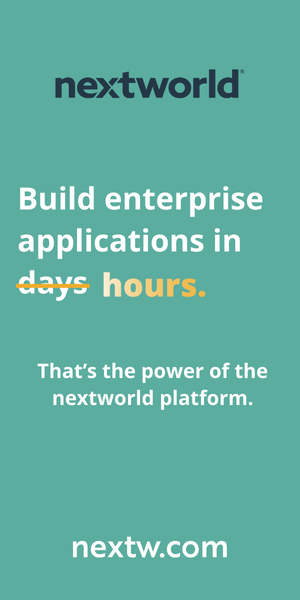Economic uncertainty, the need for automation technologies to operate seamlessly together and the rapidly increasing adoption of citizen automation programmes are converging to alter how enterprises will plan for automation in 2023 and where they will focus their investments.
In a worldwide September 2022 survey conducted by IDC, 72% of respondents expect 2023 to be a recession year. This will herald a more conservative approach to IT spending. Forty percent of respondents believe IT budgets will be flat or increase slightly, while 35% believe budgets will be reduced only in specific areas and 15% expect IT budgets to be reduced across the board.
Investments in automation grew in double digits over the past several years, and IDC expects growth to continue although the growth rate will be modestly softer than in previous years. With an economic downturn, priorities will focus more deeply on ways that automation concretely will improve financial performance by adding cash to the balance sheet and by driving out costs to operate more profitability.
Automation priorities in 2023
According to IDC’s September 2022 Future Enterprise Resiliency and Spending Survey, the top three automation priorities in 2023 are:
• Lowering operating costs (42% of respondents)
• Greater efficiency (41%)
• Improving customer satisfaction (41%)
Note: This survey had 832 decision maker respondents worldwide consisting of which 74% were in IT and 26% in lines of business. Regionally, 31% of respondents were from North America, 44% from APAC and 24% from EMEA.
The top business areas that will be prioritized in 2023 are:
• Supply chain (46%)
• Customer care (40%)
• Finance (34%)
Top process priorities including automating manual repetitive processes, fixing supply chain problems, improving order-to-cash, improving customer experience, and reducing lead time. To fix these problems, multiple styles of automation are required. Respondents named workflow automation as a primary technology needed to improve processes. Application integration was also named as a critical technology along with robotic process automation, intelligent document processing and other types of automation.
Platforms broadening automation technologies to support seamless end-to-end automation
Traditionally, enterprises have had to select diverse automation technologies from different vendors to implement straight through automation. The ability to seamlessly connect these technologies together is a top challenge cited in IDC’s survey and is also a top priority of automation vendors. Over the past few years, leading automation platform vendors have added diverse types of automation to offer broad automation capabilities, supporting backend automation through the use of APIs, front-end automation using RPA, workflow automation to advance work to completion supporting both automated and human-in-the-loop requirements and content automation that uses AI to convert structured and unstructured content into a machine readable format.
Platform vendors are also beginning to supplement core technology-specific automation development capabilities with a technology agnostic orchestration layer that is used to advance work through a process regardless of the underlying technology. The combination of multiple types of automation and an orchestration environment design and execution environment will substantially solve the challenge and effort of combining diverse automation technologies to broaden automation’s potential in an enterprise.
Measuring the business value of automation
Another top challenge cited by survey respondents is the difficulty they have building metrics that tie improvements to financial outcomes. Automation vendors are heavily focussed on this problem by using both process and task mining technologies to scope automation opportunities, moving to fact-based documentation, planning and design.
Process mining looks at a business process while task mining identifies how workers perform the actual work – or tasks – within a larger business process.
By collecting event logs from applications, process mining produces documentation about how a business process works in production, producing a statistical analysis of process efficiency. By recording workers performing the same tasks, task mining documents how manual work is performed, also producing a statistical analysis that produces a score about whether the task is a good candidate for automation.
Top priorities including automating manual repetitive processes, fixing supply chain problems, improving order-to-cash, improving customer experience, and reducing lead time.
Both provide metrics that can be used in an automation business case that describes how a process currently operates along with the metrics that can be achieved through improvement. Newer capabilities offered by some automation platform vendors take the as-is performance from process and task mining and continuously measure the performance as improvements are made. These can then be tied to financial performance improvements.
As we move into a tighter economic climate, fully understanding the automation potential before any investment in automation is made provides high quality documentation and requirements along with a mechanism to prioritize investments. Automation platform vendors are increasingly offering process and task mining capabilities as part of their platform either directly or through partnerships. They are also beginning to link execution performance with the planning-based metrics and tying those to concrete KPI improvements as well as tying automation initiatives to financial performance.
Improvements in developer ease of use support citizen automation efforts while improving automation governance
With many types of automation platforms, development does not require professional developers with computer science backgrounds. But the success in training business users to build their own automations has traditionally under-performed expectations. IDC’s survey supports this, cited as a top challenge by nearly one-third of the respondents. Up until recently, the sweet spot of automation was the use of developer specialists trained to use low-code automation environments operating out of IT.
This exposes a problem as enterprises adopt programmes that train and support business users to do their own development. In IDC’s survey, 35% of enterprises already offer a citizen developer programme. Within two years, 68% of enterprises in EMEA, 60% of enterprises in AP and 59% in North America will offer citizen developer programs. When the primary automation platform is too difficult to use successfully by business users, enterprise looks for a secondary simpler platform for their business users. That creates problems with governance, support, duplication of effort, succession planning, etc.
This rapid proliferation of new developers trained in automation development created new urgency on the part of automation platform vendors to simplify and improve capabilities to enable successful use by trained business users. Toward the end of 2022, significant improvements were made that will continue into 2023.
With business users successfully working together to solve their own automation problems coupled with automation centres of excellence focussing on strategic automation, we will see a magnification of the benefits of automation in 2023, with the potential to impact financial performance in the 2023-2024 timeframe.
As automation platforms successfully support citizen developers, enterprises have an opportunity to improve the level of collaboration between developers in line of business and in IT while offering a unified governance model supporting multiple developer personas. This will further accelerate the proliferation of automation and resulting benefits.
As we move into 2023 and greater financial uncertainty, automation technologies should be central to improving operating performance in different ways covered in this article. Leading automation platform vendors are focussed on multiple efforts to offer platforms that are extensible, simpler to use and much better at planning, quantifying benefits ahead of an automation and measuring performance on an ongoing basis that ties with financial performance. They also recognize the important role business users can play in automation in citizen developer roles.
Teams should talk to their automation platform vendors to learn more about new features and planned improvements for 2023.






